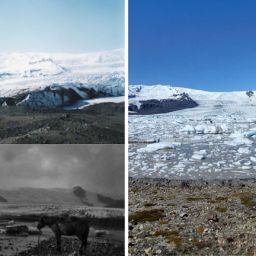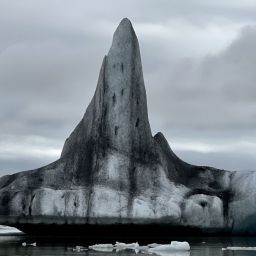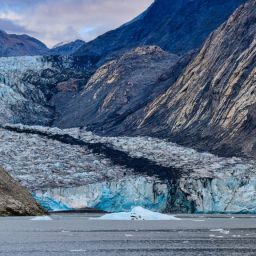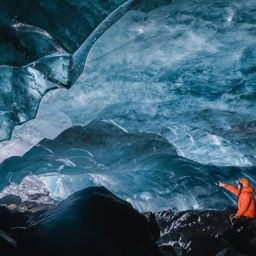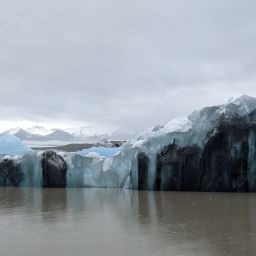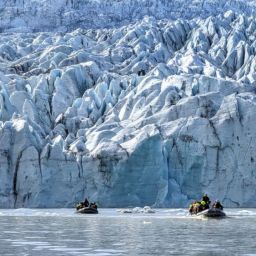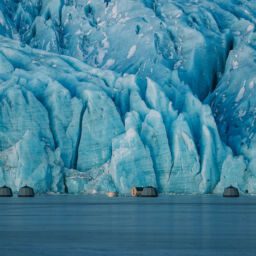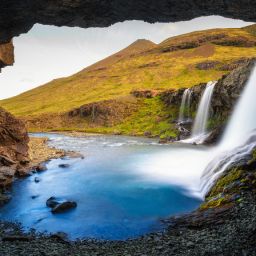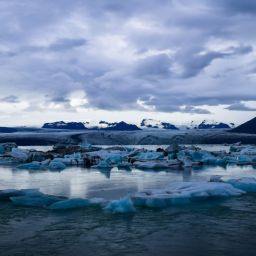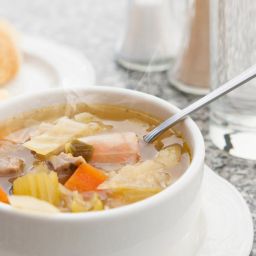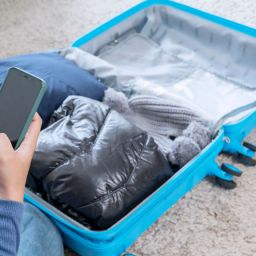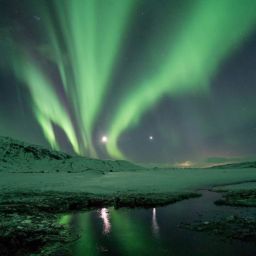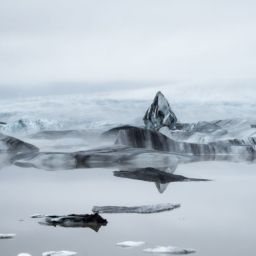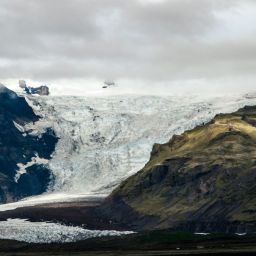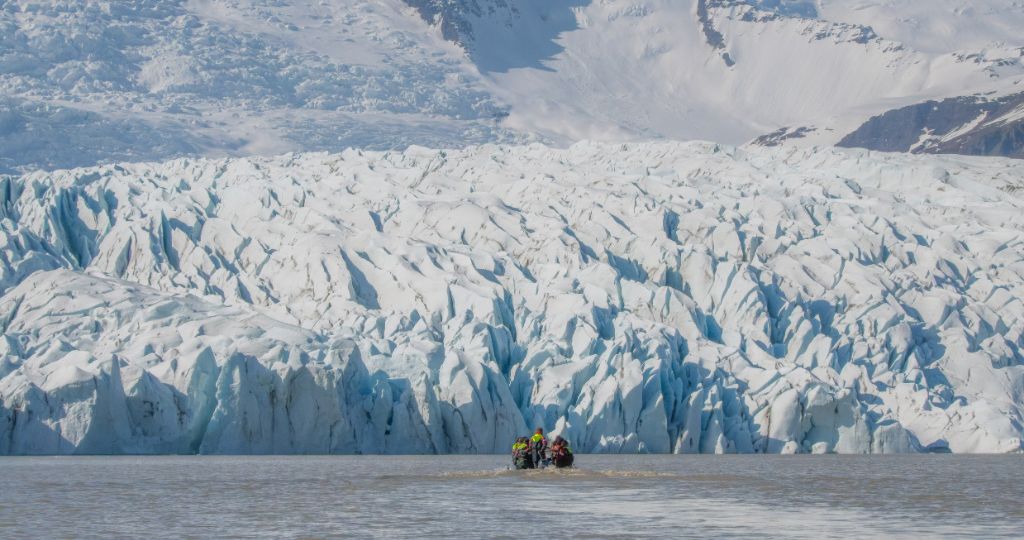
When you’re faced with a landscape as extraordinary as the glacier-filled valleys and lagoons like Fjallsárlón, it’s only natural to want to reach for your camera. But light and weather conditions can turn the same scene into very different images, so a bit of advance preparation can pay dividends. In this article we’ll take a look at what kinds of glacier shots you might consider and when’s the best time of day to take your photographs.
What might you photograph when it comes to glaciers?
A glacial environment offers a plethora of opportunities when it comes to photography, so if you’re an avid shutterbug, then plan to spend plenty of time down at Fjallsárlón and its surroundings. You can snap some images from the shore of the lagoon, while for others you’ll need to arrange a guided hike or boat trip.
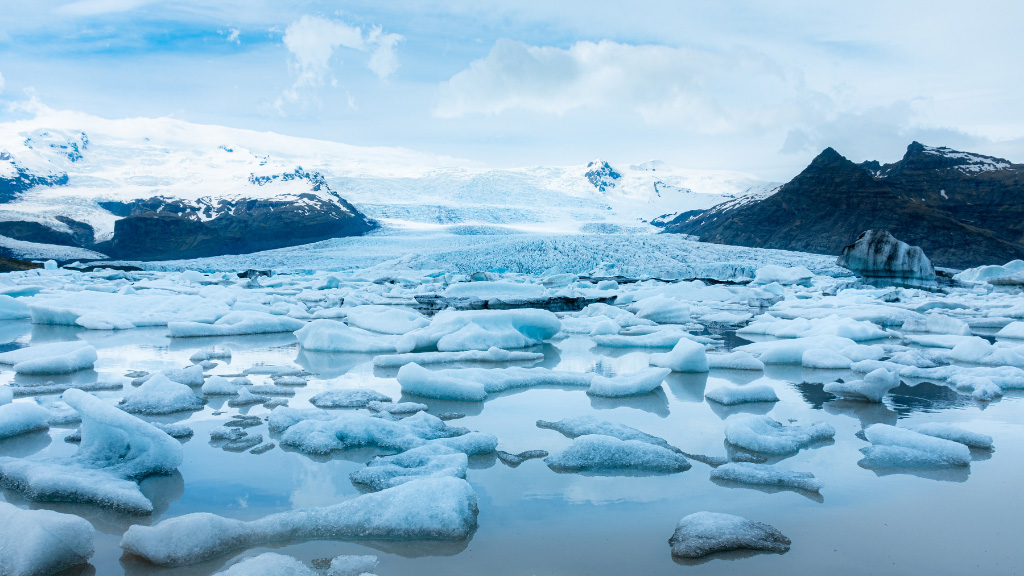
Fjallsárlón glacier lagoon is an incredible place to take pictures of a glacier and an iceberg glacier lagoon.
- The lagoons
The lagoons and their splendid backdrop provide the obvious place to start. Wide angle shots capture the extraordinary setting; you’ll find the intimate scale of Fjallsárlón translates well. You may even be fortunate enough to have a wildlife encounter with the seals that hang out in this part of South Iceland.
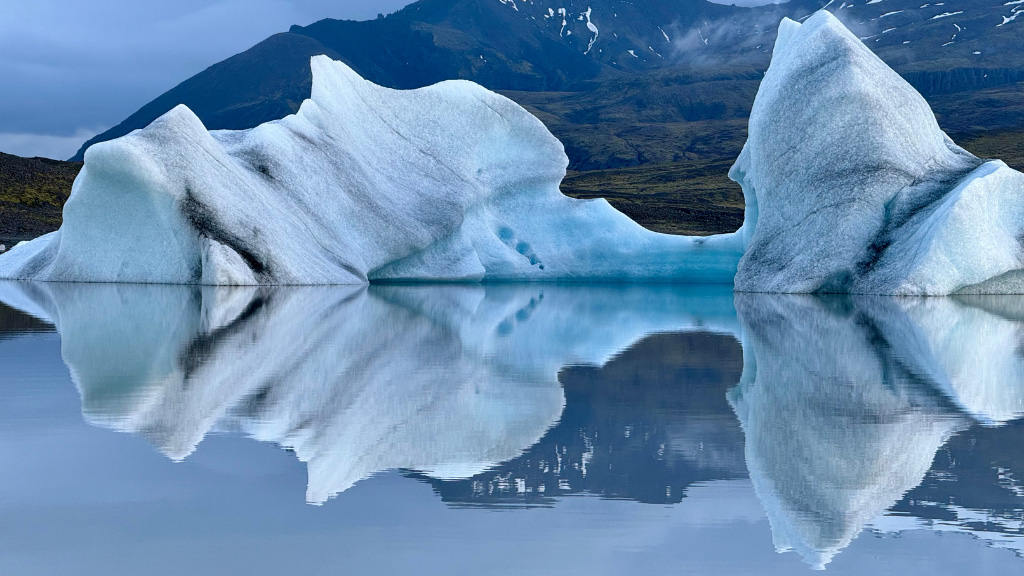
A beautiful photo of a floating icebergs on Fjallsárlón glacier lagoon mirroring in the calm lagoon.
- The icebergs
The varied shapes and colours of the icebergs that float on glacial lagoons such as Fjallsárlón make them an interesting subject. Taking a boat trip out onto the lake or heading over to Diamond Beach gets you closer to the floating chunks of ice so you can appreciate the detail.
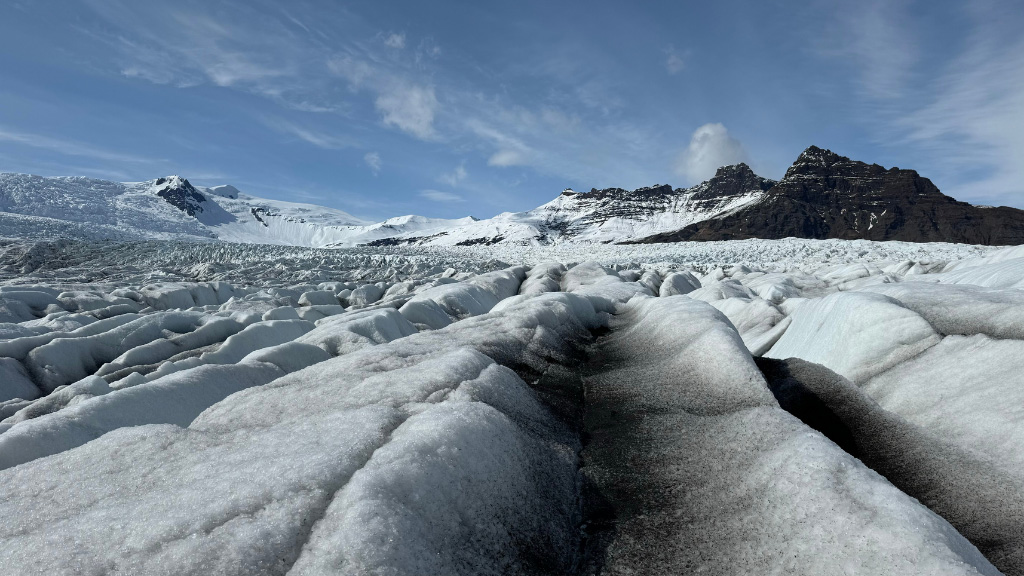
Fjallsjökull, one of Vatnajökull outlet glaciers is a beautiful area to get some great glacier photos.
- The glacier
Hiking up onto the glacier again gets you closer to enable you to appreciate the diverse nature of a glacier landscape and record what you see. The presence of moraine and ash-streaked ice helps ensure your shots aren’t overexposed, while the deep blue hues of crevasses will make any image look stunning.
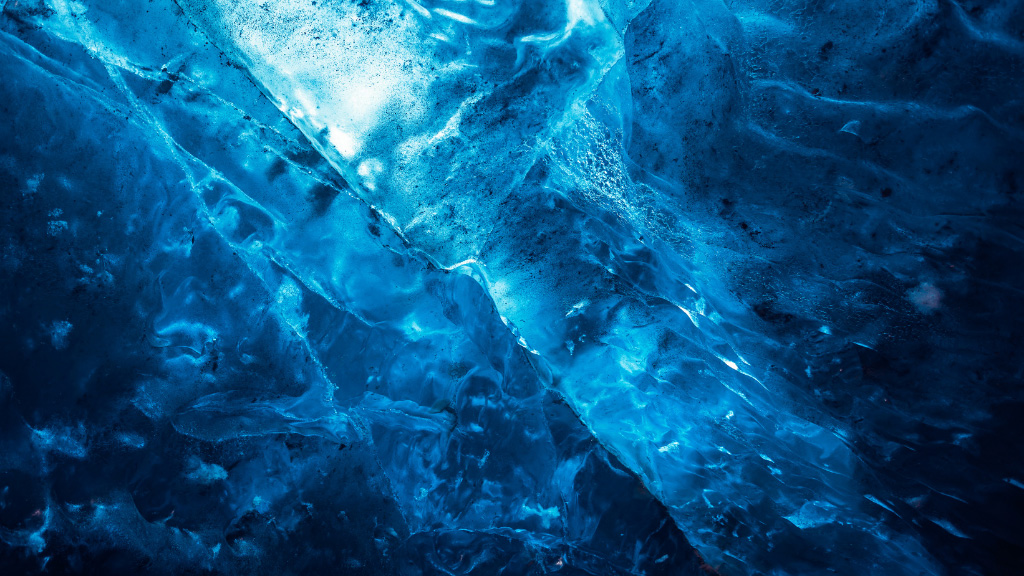
Inside one of Vatnajökull natural ice caves where the blue ice creates such amazing photo material.
- The ice caves
In winter, the ice caves beneath Vatnajökull are typically stable enough for tourists to visit. Inside, their blue walls and ceiling take on a translucent quality as the light is scattered. Close up shots of their dimpled surface and material trapped within the ice also make satisfying images.
What’s the best time to photograph glaciers in each season?
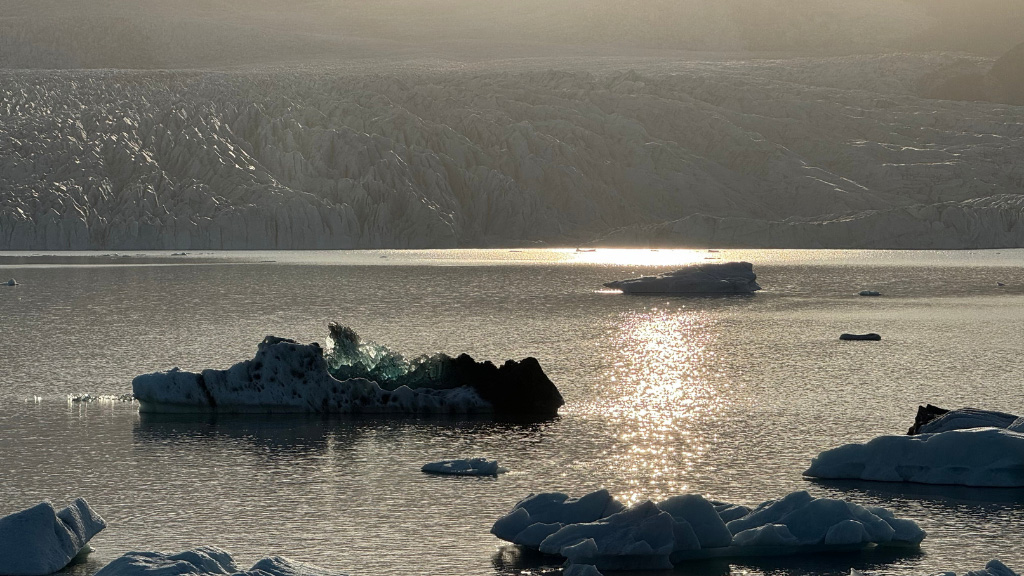
Fjallsárlón glacier lagoon late at night in the Icelandic summer evening light.
- Summer
You’ll need to be up for a late night if you’re keen to capture a sunrise or a sunset shot in summer in Iceland. In June that’s around 11.30pm and 3am. Summer light can often be relatively harsh, particularly in the middle of the day, so photographers might find a partially cloudy sky can work to your advantage – it certainly adds background interest to balance the shot.
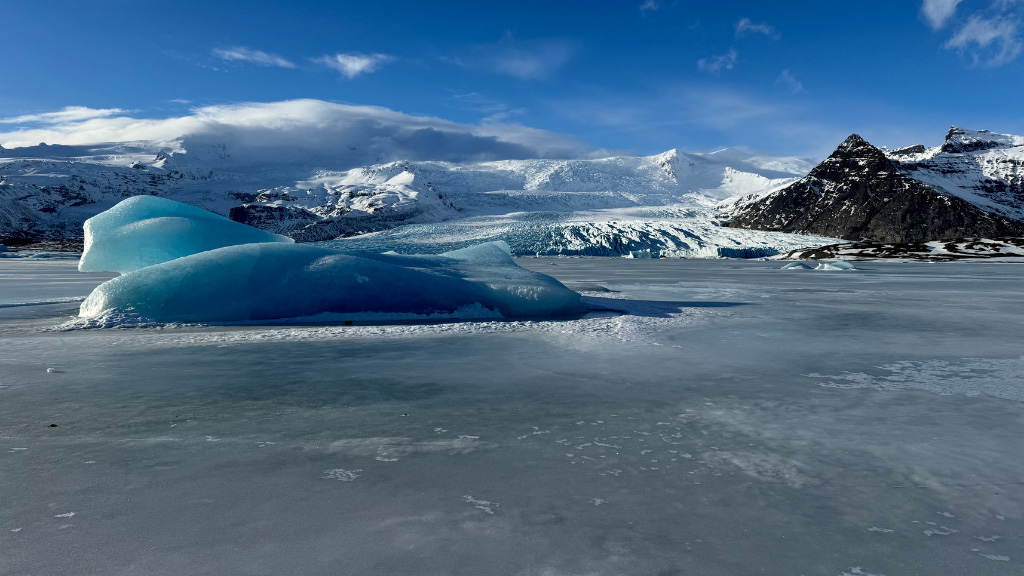
Fjallsárlón glacier lagoon becomes a frozen winter wonderland during the high winter season.
- Winter
Winter’s soft light makes for some beautiful images if you’re lucky enough to encounter the sun. Icebergs turn gorgeous shades of yellow, pink and orange, while the shadows cast on the water are also conducive to great shots. The short days mean you’ll need to be organised but they also bring with them the convenience of late morning sunrises – 11am in December – and 3.30pm sunsets sociably timed so you can pack your tripod away well before dinner.
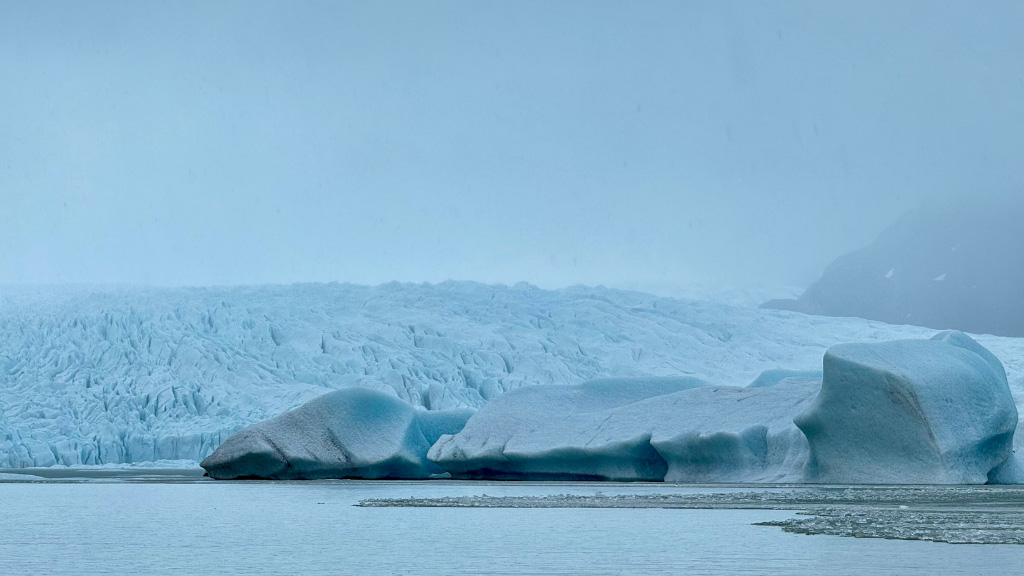
Condition in the Icelandic spring and autumn seasons can change rapidly from sunny to snowing, and even stormy!
- Spring and Autumn
These seasons are the hardest to predict when it comes to the best time for photography. You might experience warm weather and blue skies one day, followed by a blizzard the next. However, as weather conditions change quickly in Iceland, it’s worth ducking into Frost restaurant for a coffee if a storm’s blown in and the sky’s overcast when you arrive. Once the clouds lift, the scene will be transformed.
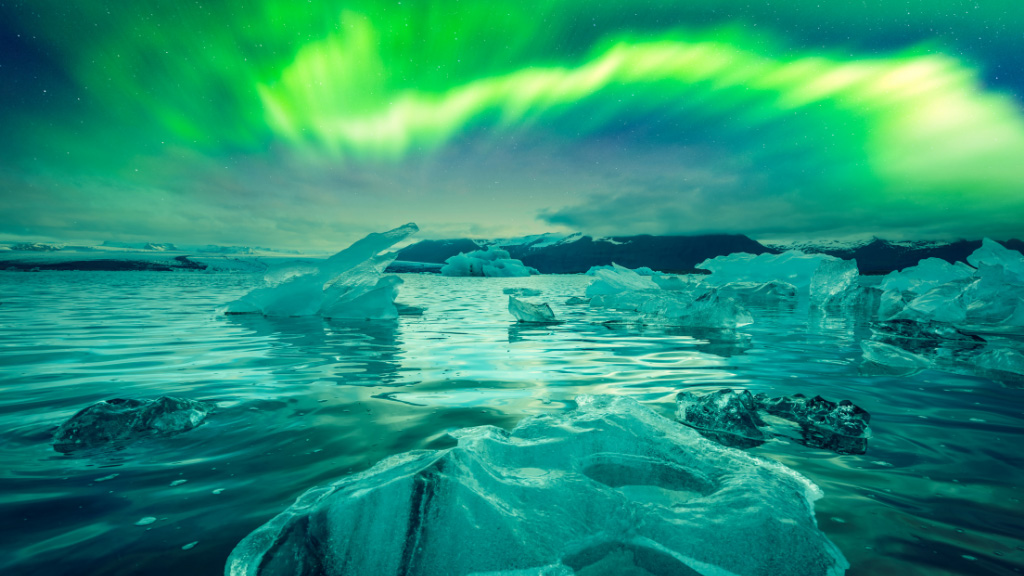
The Northern Lights dancing above a glacier lagoon in Iceland.
Photographing the Northern Lights over Iceland’s glacial lagoons
There’s another bonus to photographing Iceland’s glaciers and lagoons in autumn, winter and spring: the Northern Lights. On a clear night it’s well worth returning with a flask of hot coffee, a sturdy tripod, ample batteries and a supply of empty memory cards. The aurora is fickle, but if it appears above the glacier and its icebergs or is reflected in the water of the lagoon, then you’ll have a selection of images to treasure forever.
No matter when you come to Fjallsárlón, you’re sure to want to photograph the scene that greets you, so why not book a boat tour or a glacier hike today?


